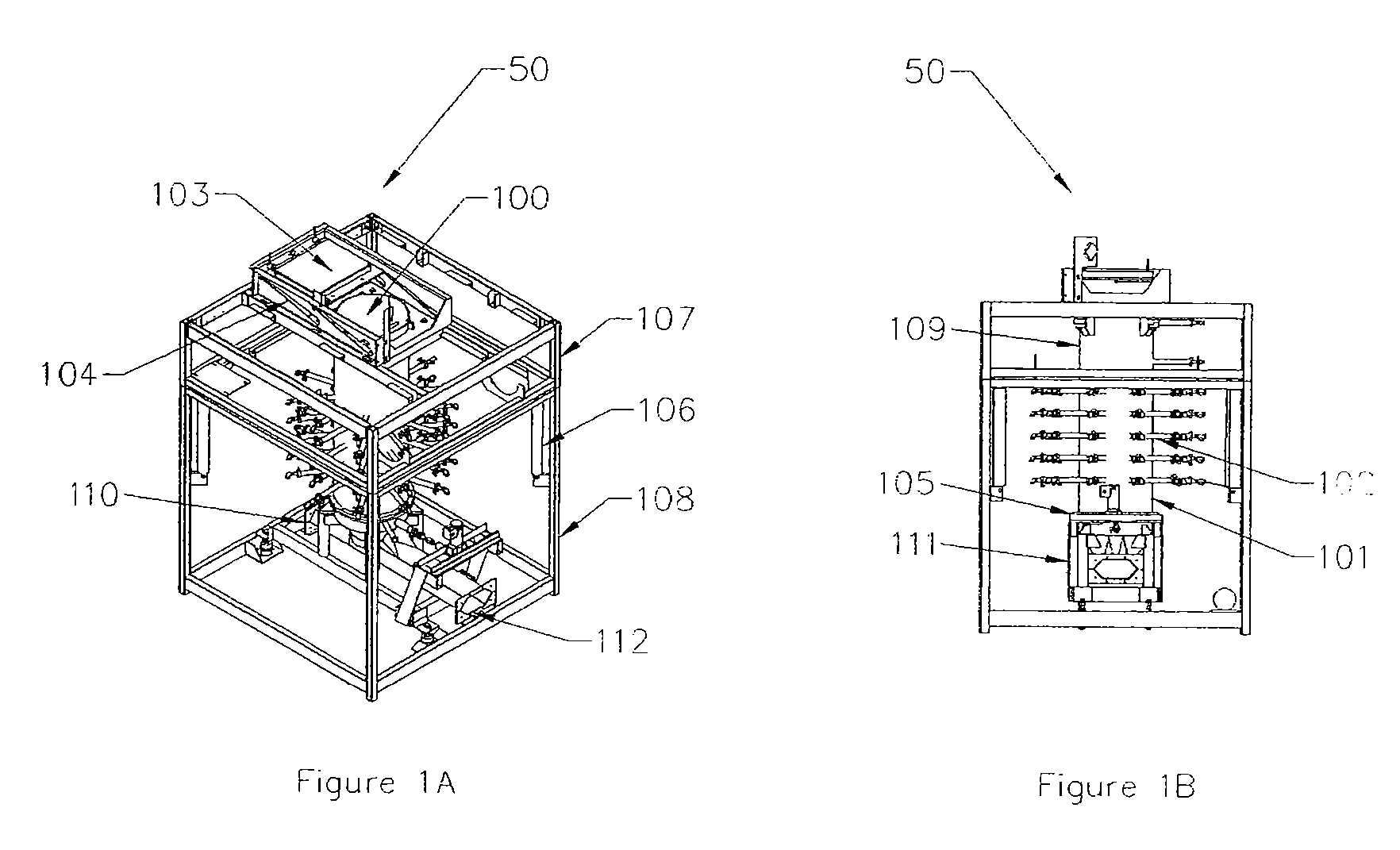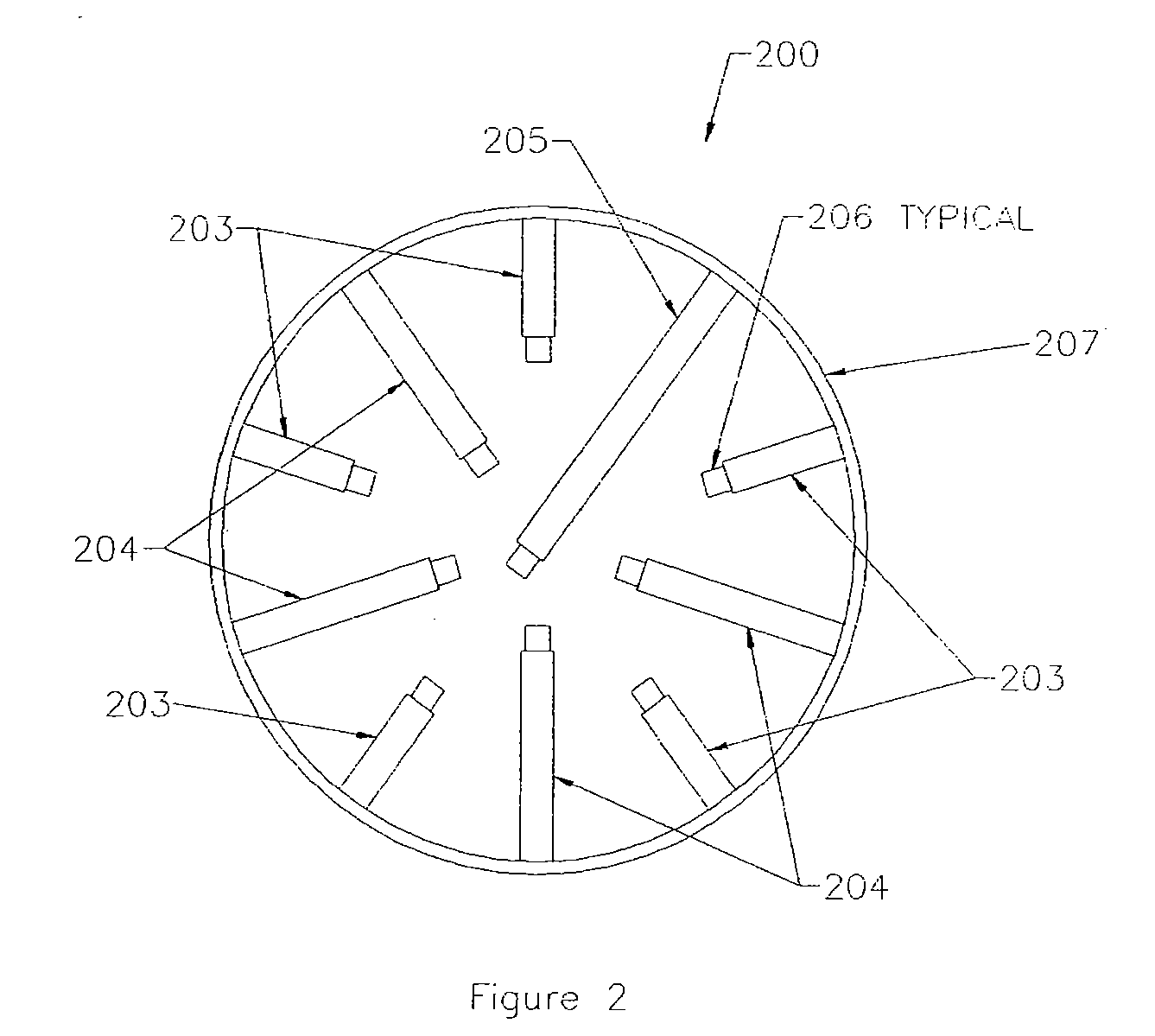Method and Apparatus for Automated, Modular, Biomass Power Generation
a technology of biomass power generation and biomass gasification, applied in the direction of gasifier mechanical details, separation process, filtration separation, etc., can solve the problems of increasing the size of the system footprint, increasing the bulk density of the fuel bed, and reducing the amount of tar. , to achieve the effect of minimizing fouling accumulation, increasing the bulk density of the fuel bed, and maximizing tar reduction
- Summary
- Abstract
- Description
- Claims
- Application Information
AI Technical Summary
Benefits of technology
Problems solved by technology
Method used
Image
Examples
example 1
[0093] Softwood chips were used with a nominal size of one inch (2.5 cm) in a gasifier with a 20-inch diameter and 6-inch spacing between five char-air injection levels. During the experiment, the moisture content of the air-dried chips varied between 7% and 8%. The heat exchanger and the filter were preheated for 50 minutes prior to starting to ignite the char bed.
[0094] One of the short char-air injection tubes in the lowest level of the gasifier was removed to provide an open port for ignition. While a mechanical blower was providing suction on the system and flowing air through it, a hand-held propane torch was used to ignite the char at this single char-air tube location. The char-air injection tube was then reinserted. The ignition of the char bed spread quickly upwardly and horizontally across the gasifier. The lower three char-air injection levels reached over 800° C. seven minutes after lighting the char and the woodchip feeder was then started. The flow rate of producer g...
example 2
[0098] Many of the parameters in this test were similar to the test of Example 1, however the engine was operated to produce electricity to satisfy a load of 49.4 kWe using 135 Nm3 / h of producer gas at the elevation of 5720 ft above sea level. If the engine had been at sea level, correcting for the atmospheric pressure ratio, a power output of 60.9 kWe would be expected at a correspondingly higher producer-gas flow rate.
[0099] The gasifier was ignited by removing all five of the short fingers from the lowest char-air injection level. While the producer gas blower was drawing air through the system, a hand-held propane torch was used to ignite the char bed through the five open ports that house the short char-air injection tubes. The moisture content of the wood used in this run was measured and found to vary between 9% and 14%. The dry gas composition in this run was typically 20% CO, 10% CO2, 3% methane, and 18% hydrogen, with the balance nitrogen.
example 3
[0100] Many of the parameters in this test were similar to the test of Example 2, however only two of the short char-air injection tubes were removed for ignition with the hand-held propane torch. Ignition appeared to spread about as quickly up through the char bed, almost as if the gasifier had been ignited at five locations, instead of just two. The moisture content of the feed varied between 7 and 12% in this run. During the steady-state portion of this run, while producing 135 Nm3 / h of producer gas over a period of 146 minutes, 99.6 kg of dry wood chips were fed. This was a feeding rate of 40.9 kg wet wood chips / h. Based on the 49.4 kWe produced by the engine / genset in Example 2, the system requires 0.75 kg dry wood per kWeh.
PUM
| Property | Measurement | Unit |
|---|---|---|
| Density | aaaaa | aaaaa |
| Temperature | aaaaa | aaaaa |
| Flow rate | aaaaa | aaaaa |
Abstract
Description
Claims
Application Information
 Login to View More
Login to View More - R&D
- Intellectual Property
- Life Sciences
- Materials
- Tech Scout
- Unparalleled Data Quality
- Higher Quality Content
- 60% Fewer Hallucinations
Browse by: Latest US Patents, China's latest patents, Technical Efficacy Thesaurus, Application Domain, Technology Topic, Popular Technical Reports.
© 2025 PatSnap. All rights reserved.Legal|Privacy policy|Modern Slavery Act Transparency Statement|Sitemap|About US| Contact US: help@patsnap.com



